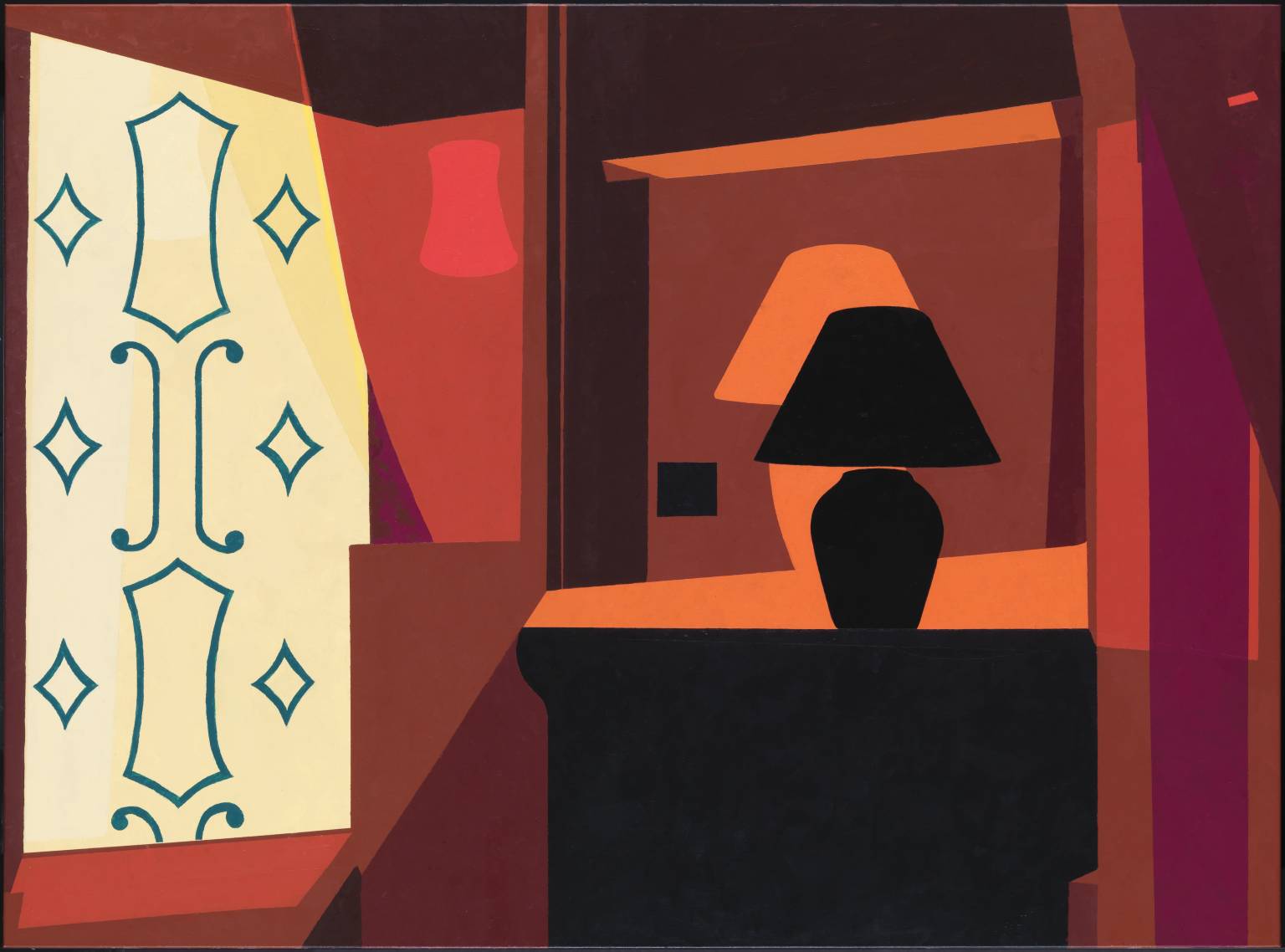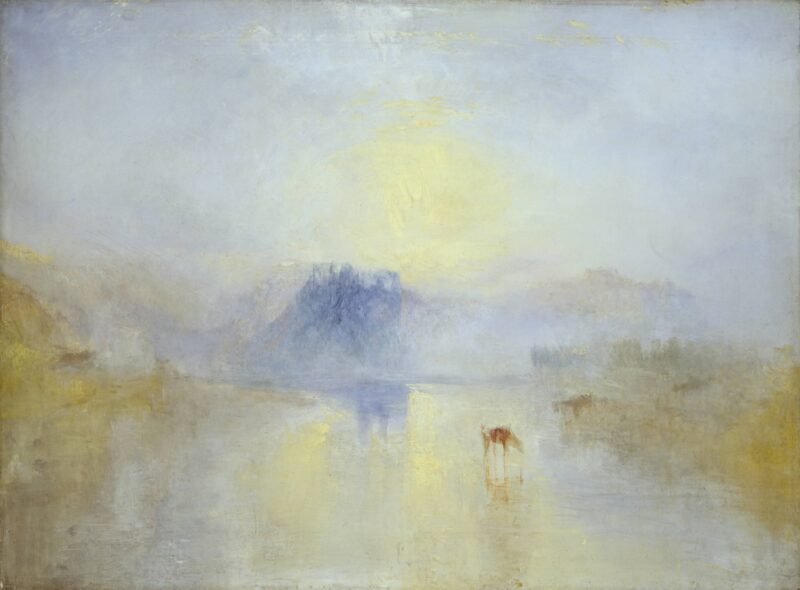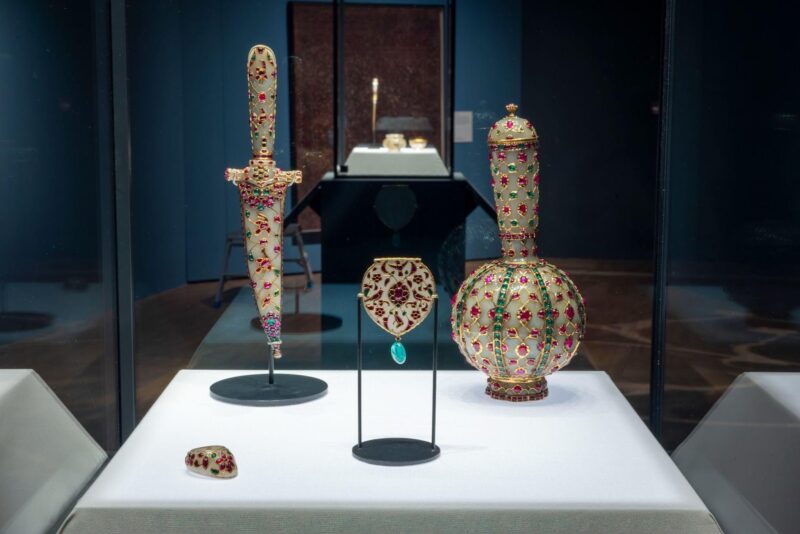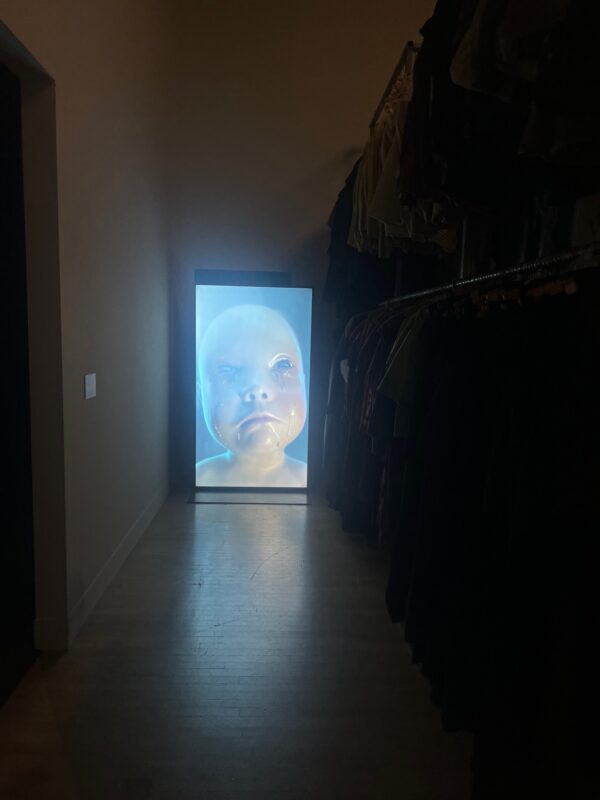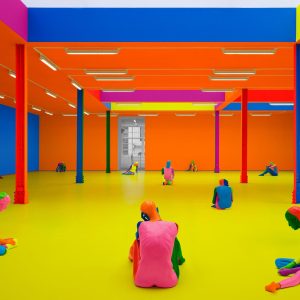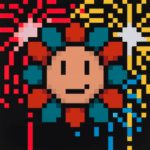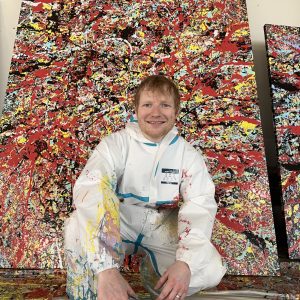Most days art Critic Paul Carey-Kent spends hours on the train, traveling between his home in Southampton and his day job in Surrey. Could he, we asked, jot down whatever came into his head?
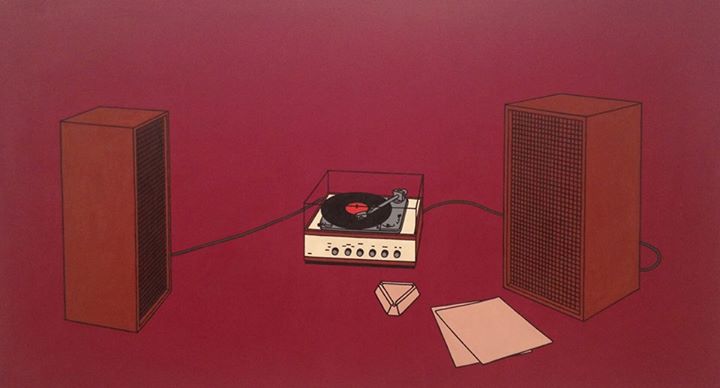
Stereophonic Record Player, 1968
Some artists are strongly associated with a particular colour: Van Gogh’s yellow, Klein’s blue, Reinhardt’s black etc. I wouldn’t put Caulfield in that group, but I was struck at Tate Britain’s exemplary overview of his paintings (closes 1st September) by the number in which dark reds predominate.
The usual Caulfield tropes are certainly in evidence, too: plenty of time in the restaurant; no one else around yet; the Cubist still life flattened out and then expanded into architectural settings; persistent traffic between reality and artifice; an interest in the exotic smuggled into the everyday; sharp shadows; the black outlines which – until the late 80’s – fix and almost imprison objects, so contributing to an atmosphere of bittersweet melancholy; the late mix of styles through which Caulfield reflects, pre-internet, on how our perceptions are largely constructed second-hand by images. But anyway, Stereo Record Player, Tandoori Rest, Registry, Happy Hour and his last painting, Braque Curtain, are all predominantly dark red. Happy Hour includes a glass of claret, reflecting Caulfield himself and triggering the thought – most of these are wine-dark tones. That fits with his recurring interest in food and drink, and also matches the sense that we’re balanced somewhere between the anticipation of pleasure and the expectation of regret. Still, I’d rather be marooned with Caulfield than in the parallel Hume or Lowry shows.
